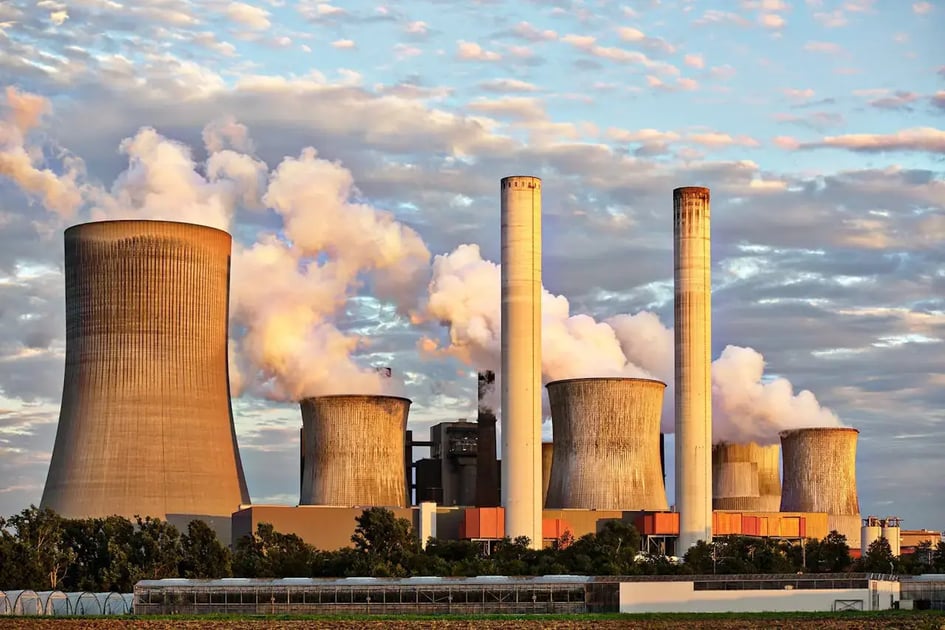Decarbonizing Real Estate
September 6, 2024 •Christian Powell

How Buildings Contribute to the Global Greenhouse Gas Footprint
Buildings serve as essential hubs for shelter, safety, and economic activities worldwide. Their construction and operation intricately link various systems, from the raw materials and transportation needed to build them, to the electricity and energy that make them livable, and their integration into urban environments. Yet, this intricate web significantly contributes to greenhouse gas (GHG) emissions. These emissions stem from direct on-site activities, such as heating and cooling, the use of refrigerants in climate control systems, and the off-site production of energy that powers these buildings.
What is the extent of GHG emissions attributed to buildings?
In 2021, direct GHG emissions from on-site fuel combustion for cooking and heating represented approximately 6% of global GHG emissions. When including indirect GHG emissions—those produced off-site during the generation of electricity and heat used for various building functions such as heating, cooling, cooking, lighting, and powering electronics—the total nearly triples, escalating from around 3 gigatonnes of carbon dioxide (GtCO2) to 10 GtCO2, which is about 18% of the world's GHG emissions. Additionally, constructing and furnishing buildings generates further emissions, referred to as embodied emissions, arising from the production and transportation of construction materials and the energy consumed in building and retrofitting activities.
Recent Emission Trends in Global Buildings
From 2010 to 2022, direct emissions from building activities have largely plateaued. While there was a modest increase in indirect emissions during this period, they have remained relatively stable since 2018. The global floor area of buildings—encompassing both residential and commercial properties—is expected to nearly double by 2050. If these new constructions do not incorporate proper insulation and continue to rely on fossil fuel-based systems like gas boilers, emissions will rise, thwarting efforts to meet essential climate targets.
From 2010 to 2022, direct emissions from activities within buildings largely held steady. Although indirect emissions saw a slight uptick during this period, they too have stabilized since 2018. The total floor area of buildings worldwide—including both residential and commercial spaces—is projected to nearly double by 2050. If these new buildings are constructed without proper insulation and continue to rely on fossil fuel-powered equipment, such as gas boilers for heating, emissions will inevitably rise, making it impossible to achieve critical climate targets.
Key Approaches to Minimizing and Eradicating Emissions from Buildings
Eliminating emissions related to buildings requires three major shifts:
- Creating zero-carbon buildings by utilizing materials that are produced with either zero or net-zero emissions;
- Enhancing energy efficiency and curbing energy demand through behavioral adjustments, innovative building design, and the use of energy-efficient appliances, thereby enabling buildings to achieve superior performance with lower energy consumption; and
- Transitioning heating, cooling, and appliances to technologies that eliminate emissions during their operation.
Building electrification and renewable energy integration
Electrification stands at the heart of creating a carbon-neutral building environment, hinging on the greening of the power sector. By adopting heat pumps, fans, and air conditioners, buildings can efficiently manage heating and cooling needs. In tandem, electric appliances, induction stoves, and energy-efficient lighting will further reduce emissions. Wherever feasible, integrating on-site renewable energy systems and storage solutions will complement renewable electricity from the grid. Importantly, these storage systems will act as critical backups during power outages or extreme weather conditions.
Ensuring accessibility and affordability of energy-efficient technologies in buildings
Ensuring that these energy-efficient, decarbonized buildings are accessible and affordable for everyone is crucial. Although efficient technologies often yield cost savings over time, their initial investment can be higher compared to less efficient, fossil fuel-dependent alternatives. Therefore, securing financing options for energy-saving measures is essential to make these solutions attainable for all. While this primarily applies to the formal housing sector, distinct considerations are necessary for informal and incremental construction.
**********
Like what you read? Share this article with your network by clicking on the Share buttons below.
You may also be interested in these articles:
- Sunrise in Vietnam Real Estate
- ESG Investing Reshapes Real Estate
- The Rise of Generative AI in Real Estate
- Navigating the 2024 Interest Rate Environment
Disclaimer: The views and opinions expressed in this article are those of the author and do not necessarily reflect the official policy or position of Maiden Capital. The information provided is meant as a general guide only and should not be construed as investment advice. You should always consult your financial, legal and tax advisers regarding private equity and real estate investments
